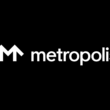What is a Data Catalog Software
Data Catalog Software is a type of tool or platform designed to help organizations manage and organize their data assets. It serves as a centralized repository for metadata, making it easier for users to discover, understand, and use the available data within an organization. Here are some key features and functions typically associated with data catalog software:
- Metadata Management: Data catalogs store and manage metadata, which includes information about the characteristics, structure, and relationships of data assets. This metadata might include data types, field descriptions, source information, and more.
- Data Discovery: Users can search and explore the catalog to discover available data assets. This includes the ability to search for specific datasets, understand their contents, and identify relevant data sources.
- Data Lineage: Data catalog tools often provide data lineage tracking, which shows the flow of data from its source through various transformations and processes to its final destination. This helps users understand how data is produced and used within the organization.
- Collaboration: Many data catalogs offer collaboration features, allowing users to annotate and share insights about data assets. This fosters communication among data users, data stewards, and other stakeholders.
- Data Quality: Some data catalog software tools include data quality features, enabling users to assess the quality and reliability of data. This may involve profiling data to identify issues such as missing values or outliers.
- Data Classification and Tagging: Catalogs often support data classification and tagging, helping users categorize and label data assets based on sensitivity, usage, or other criteria. This supports data governance and compliance efforts.
- Integration with Data Sources: Data catalogs can integrate with various data sources, databases, and data storage systems. This allows them to automatically discover and register new data assets as they are created or updated.
- Security and Access Control: To ensure data security, data catalog software often provides access control mechanisms, allowing organizations to manage who can access, modify, or delete metadata and data assets within the catalog.
- APIs and Integrations: Integration capabilities with other data management tools, business intelligence platforms, and analytics tools are crucial for a seamless data workflow. Many data catalogs offer APIs to facilitate such integrations.
- Scalability: As the volume of data within an organization grows, the data catalog software should be scalable to handle the increasing complexity and size of the metadata repository.
Data catalog software plays a vital role in supporting data governance initiatives, aiding in regulatory compliance, and improving overall data management and utilization within an organization.
How do I create a data catalog?
Creating a data catalog involves several steps to ensure that it effectively serves the needs of your organization. Here’s a general guide on how to create a data catalog:
- Define Objectives and Requirements:
- Clearly define the goals and objectives of your data catalog. Understand what problems it needs to solve and how it will benefit users within your organization.
- Identify the key requirements based on the specific needs and challenges of your organization.
- Inventory Data Assets:
- Take stock of all the data assets within your organization. This includes databases, data warehouses, data lakes, files, and any other sources of data.
- Document metadata for each data asset, including information such as data types, field descriptions, source, and any other relevant details.
- Choose a Data Catalog Tool:
- Select a data catalog software or tool that aligns with your organization’s requirements. Consider factors such as ease of use, scalability, integration capabilities, and support for metadata management features.
- Define Metadata Standards:
- Establish metadata standards to ensure consistency across your data catalog. This includes defining naming conventions, data types, and other metadata attributes.
- Decide on a set of tags or labels to classify and categorize data assets based on their characteristics, sensitivity, or usage.
- Integrate with Data Sources:
- Integrate your chosen data catalog tool with your data sources. This can involve connecting to databases, data warehouses, cloud storage, and other repositories.
- Set up automated processes for data discovery, ensuring that the catalog stays up-to-date as new data assets are added or existing ones are modified.
- Data Classification and Tagging:
- Implement a system for classifying and tagging data assets. This can include labeling data based on sensitivity, business unit, or any other relevant criteria.
- Ensure that users understand the tagging system and encourage consistent use to enhance search and discovery.
- Establish Data Governance Policies:
- Define and implement data governance policies to ensure data quality, security, and compliance. Specify who has access to the catalog, who can modify metadata, and any other relevant governance rules.
- Enable Search and Discovery:
- Configure search capabilities within the data catalog. Ensure that users can easily search for and discover relevant data assets based on metadata attributes, tags, or keywords.
- Implement filters and facets to enhance the search experience.
- Provide User Training:
- Train users on how to use the data catalog effectively. This includes educating them on search functionalities, metadata standards, and collaboration features.
- Emphasize the importance of accurate metadata entry and tagging for improved catalog usability.
- Monitor and Maintain:
- Regularly monitor the usage of the data catalog. Gather feedback from users to identify areas for improvement.
- Perform regular maintenance tasks, such as updating metadata, reviewing data classifications, and ensuring the catalog remains aligned with organizational goals.
- Iterate and Improve:
- Continuously iterate and improve the data catalog based on user feedback, changing data landscapes, and evolving organizational needs.
- Stay informed about updates and new features in your chosen data catalog tool and incorporate them as needed.
By following these steps, you can create a robust and effective data catalog that facilitates data discovery, enhances collaboration, and supports overall data management within your organization.
Top 5 Affordable Data Catalog Software Tools
Selecting the most affordable data catalog tool depends on your specific needs and budget. Here are five options to consider, catering to different requirements:
- Best suited for organizations comfortable with open-source solutions and have the technical expertise to manage and maintain it.
- Offers core data catalog functionalities like data discovery, lineage tracking, and collaboration, making it a budget-friendly option for organizations getting started with data cataloging.
- Requires in-house development and maintenance resources, which can be a cost factor for some businesses.
- Another open-source option that is easy to deploy and manage.
- Offers comprehensive data discovery features, including faceted search, data lineage visualization, and integration with various data sources.
- Like Amundsen, it requires technical expertise for setup and maintenance, adding to the overall cost.
- Provides a user-friendly interface and strong collaboration features, making it ideal for organizations that prioritize data literacy and knowledge sharing.
- Offers a free “Community Edition” with limited features, which can be a good starting point for small businesses or teams new to data catalogs.
- Paid plans scale with features and user base, making it potentially costlier for larger organizations.
- Data.world:
- A cloud-native platform that offers a unique data shopping experience, allowing users to discover and access relevant datasets easily.
- Provides a free plan with limited features, suitable for individual users or small teams.
- Paid plans offer additional functionalities like collaboration tools, data governance features, and advanced analytics, which can be expensive for larger enterprises.
- A comprehensive data catalog solution built on the Microsoft Azure cloud platform.
- Offers a free tier with basic data discovery features, making it suitable for small businesses or organizations already invested in the Microsoft Azure ecosystem.
- Paid tiers provide advanced functionalities like data governance, lineage tracking, and integration with other Azure services, which can be costly for organizations not heavily reliant on Azure.
It’s important to remember that these are just a few examples, and the most affordable option for you will depend on your specific needs and budget. Carefully evaluate your requirements and compare different tools before making a decision








